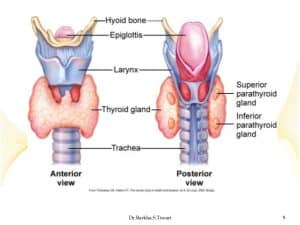Navigating Parathyroid Problems: Understanding Symptoms and Treatment Options
Navigating parathyroid problems can be a complex journey, but understanding the symptoms and treatment options is crucial for effective management. Here, we delve into the intricacies of parathyroid disorders to provide you with comprehensive insights.

What are Parathyroid Glands?
Parathyroid glands are small, pea-sized glands located in the neck near the thyroid gland. Despite their proximity, they serve distinct functions. While the thyroid gland regulates metabolism, the parathyroid glands are responsible for controlling calcium levels in the body. This balance is critical for normal nerve and muscle function.
Types of Parathyroid Disorders
1. Hyperparathyroidism
Hyperparathyroidism occurs when one or more of the parathyroid glands become overactive, leading to excessive production of parathyroid hormone (PTH). This condition disrupts calcium regulation, causing high blood calcium levels (hypercalcemia). Symptoms may include:
- Fatigue
- Weakness
- Kidney stones
- Bone pain
2. Hypoparathyroidism
Hypoparathyroidism is characterized by insufficient production of PTH. This deficiency results in low blood calcium levels (hypocalcemia), which can manifest with symptoms like:
- Muscle cramps
- Tingling sensation
- Seizures
- Brittle nails and hair
Symptoms of Parathyroid Problems
The symptoms of parathyroid disorders can vary widely depending on whether the glands are overactive or underactive. Recognizing these symptoms is crucial for timely diagnosis and treatment.
Common Symptoms Include:
- Bone pain or tenderness
- Muscle weakness
- Kidney stones
- Fatigue
- Difficulty concentrating
Diagnosis
Accurate diagnosis of parathyroid disorders involves a combination of medical history review, physical examination, and laboratory tests. Key diagnostic tests include:
- Blood tests to measure calcium and PTH levels
- Imaging studies such as ultrasound or sestamibi scan
- Bone density scan to assess bone health
Treatment Options
1. Hyperparathyroidism Treatment
Treatment for hyperparathyroidism aims to reduce PTH levels and restore normal calcium balance. Options include:
- Surgery (parathyroidectomy): Removal of the overactive gland(s)
- Medication: Calcimimetics to lower blood calcium levels
2. Hypoparathyroidism Treatment
Management of hypoparathyroidism focuses on increasing blood calcium levels and managing symptoms. Treatment may involve:
- Calcium and vitamin D supplements
- PTH replacement therapy
Lifestyle and Home Remedies
In addition to medical treatment, certain lifestyle modifications can help manage parathyroid disorders effectively:
- Maintaining a balanced diet rich in calcium and vitamin D
- Staying hydrated to prevent kidney stone formation
- Regular physical activity to support bone health
Conclusion
Understanding parathyroid problems, their symptoms, and treatment options is essential for anyone affected by these disorders. Whether dealing with hyperparathyroidism or hypoparathyroidism, timely intervention and comprehensive care can significantly improve quality of life.